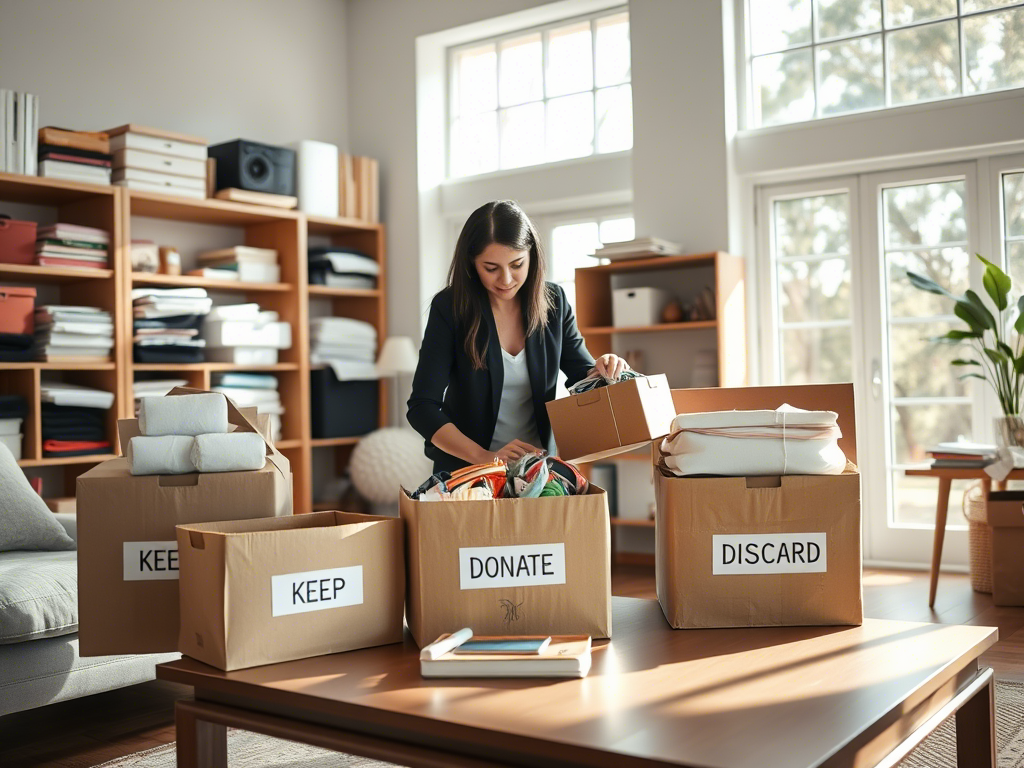5 Tips for Decluttering Your Home Like a Pro

Beyond just keeping things tidy, cleaning your home can enhance your life by offering clarity, calmness, and a new beginning. Decluttering can create a calm living area, whether moving, simplifying, or trying to keep your home cleaner. This article offers helpful advice, inspiration, and five expert cleaning tips for messy areas.
Start Small and Focused
Cleaning up seems like a big task, therefore many people ignore it. It can be difficult to look at an untidy home and know where to start. It is essential to start small and maintain focus because of this. You lessen the burden and reduce stress by dividing the task into smaller portions. Start with a small area, such as a countertop, shelf, or drawer. It can be extremely inspiring to focus your efforts and see immediate benefits in this way.
Create a sense of urgency and avoid procrastinating by setting a timer for 15 to 30 minutes. Working under stressful circumstances necessitates making decisions quickly rather than carefully considering each one. Sort items into three boxes while cleaning: one for trash, one for donations or sales, and one for keepers. It makes managing your belongings easier and establishes a precise plan for how to handle each item.
Give yourself the truth about what you need. It is generally time to part with anything you have not used in more than a year. Building trust is made easier by beginning with little tasks. You will be encouraged to take on bigger, messier tasks after each small success. For instance, you can get prepared to organize your pantry or closet after cleaning your bedside table. Never forget that progress, not perfection, is what matters most. You get closer to having a clutter-free home with each small step.
Embrace the One In One Out Rule
When you add new items to your space without getting rid of old ones, clutter slowly collects. When new things are added without removing old ones, clutter grows gradually rather than all at once. Experts advise adhering to the one-in, one-out rule to stay away from this issue. According to this simple idea, you should discard an old item for every new one you buy. Donate or throw away any shoes you no longer wear when you get new ones.
This keeps your area tidy and keeps it from being cluttered again. The one-in, one-out rule is a good way to keep clutter out of places including shelves, kitchens, and closets. You must carefully consider your options before making a new purchase for these instructions to be effective. Think about whether you need it and whether you are ready to give up anything you own to create room.
In this way, you make more careful purchases and cut down on buying on impulse. This rule also applies to sentimental objects and presents. If an old item is sentimental to you, think about replacing it with a new one. This simply keeps your belongings relevant and in peace, not that you cannot enjoy new items. By following this advice consistently, you will create a positive habit that will help you avoid clutter in the future. It is an effective way to keep your home tidy and useful while keeping the organization you have achieved.
Categorize and Conquer
Arranging your belongings by kind more than by room is an excellent way to organize your home. Marie Kondo's method helps people decide what to keep and avoid having duplicates in various areas of the home. Collect all of your clothes from different locations around the home in one place instead of just cleaning your bedroom. Next, decide what you can discard and what you want to keep.
It can boost your confidence to start with basic items like clothing or kitchenware. It is easier to see what you need with these things because they focus more closely on practical application. Once you feel happy with that, you can go on to more difficult things, like books, documents, and sentimental items. As you examine each item, think about how often it is used.
Does it make life better? If it were still available today, would I buy it again? It could be wise to give or discard the item if you said "no" to these questions. After you have finished cleansing, arrange what is left in a way that makes value for your life. Label bins so you know what is inside and use storage options that are easy to reach. Organize comparable items together, such as storing your scarves in one box or your baking tools in one drawer. For a clutter-free, well-organized home in the long run, combine items by category rather than by room.
Use Storage Solutions Wisely
While storage solutions can help you organize your home, decluttering should still be done first. Remove items that are unnecessary before purchasing containers, baskets, or shelves. Decluttering first not only helps you move stuff around but also makes your area more useful. After clearing out unnecessary things, consider what you need to store and how to make it accessible. Select storage solutions according to your requirements.
Transparent containers work best for products that are clearly visible and work well for keeping seasonal or rarely used items. Space can be saved by using vertical storage, particularly in smaller spaces. To keep items off the floor, put shelves on the wall, install organizers above the door, or stack containers. Furniture getting several uses, such as beds with drawers or ottomans with storage, can keep a room neat.
Effective storage needs labeling. In the home, marked boxes make it easier for everyone to find and return items exactly. However, take care not to acquire a lot of storage containers, as this can give rise to extra clutter. Creating a way that suits you and assists in your decluttering is the aim. Utilizing storage solutions to organize will keep your home neat and help with decluttering in the future.
Let Go of Sentimental Clutter
Sentimental items can be hard to get rid of. These items remind us of memories and feelings from the past, which makes it tough to let them go. But keeping too many can create a mess and distract us from the present. It's important to learn how to part with these items carefully. Start by recognizing the feelings connected to your sentimental things. It's okay to feel nostalgic, but remember that your memories are inside you, not tied to physical items.
Keep what truly brings joy, such as a letter from a loved one or a cherished childhood toy. Consider taking photos of items before letting them go if you have difficulty parting with them. This way, you can keep the memories alive without holding onto the actual objects. Get creative with sentimental items by framing a concert ticket or making a quilt from old T-shirts.
Try to limit the space you use for sentimental things. A small box or chest can help you keep only the most meaningful items. Avoid keeping things out of guilt or obligation, especially if they were gifts. Your home should represent your current life, not just be a storage place for the past. By managing sentimental clutter thoughtfully, you'll make space for new memories today, both physically and emotionally.
Conclusion
Decluttering your home is not just about putting things in order. It’s about making a place that reflects what’s important to you and suits how you live. You can start small, use the one-in-one-out rule, sort your items into categories, find good storage, and deal with sentimental stuff. This way, you can create a home that's not only useful but also calm and inspiring.
Remember, decluttering is a process that takes time, effort, and a change in how you think. Celebrate the little wins along the way and keep in mind that making progress is more important than being perfect. A tidy home helps you have a clear mind, allowing you to focus on what matters in your life.








